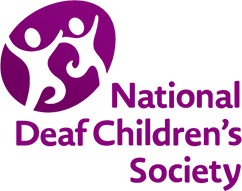Glossary: B
Battery tester
Used to check how much power is left in a battery.
Bilateral deafness
Hearing loss in both ears.
Bilingual support worker (or bilingual support assistant)
A person employed by a school to either:
- work with children who have English as an additional language (EAL)
- work alongside a speech and language therapist to provide speech and language therapy in the language of their choice.
Bimodal fitting
Using a different type of hearing technology in each ear, such as a hearing aid in one ear and a cochlear implant in the other.
Binaural
Hearing with both ears.
Bluetooth accessories
A type of wireless communication technology. It can be used with hearing aids and cochlear implants to connect them wirelessly to audio devices like mobile phones.
Bone anchored hearing aid (BAHA)
The brand name of a type of bone conduction hearing device (BCHD).
Bone conduction hearing device (BCHD)
A type of hearing aid or implant which conducts sound through the skull rather than through the middle ear.
Bone conduction hearing aid (BCHA)
Bone conduction hearing aids can be worn on metal or soft fabric headbands. They use a vibrating pad worn behind the ear, resting on the mastoid bone (part of the skull behind the ear). They’re suitable for children who have conductive hearing loss and don’t benefit from a conventional hearing aid or have problems wearing behind-the-ear hearing aids.
Bone conduction hearing implant (BCHI)
A bone conduction hearing implant may be suitable for children with permanent or long-standing conductive deafness. It consists of a sound processor that is held on the head behind the ear. This might be clipped to a fixture, known as an ‘abutment’, a small titanium screw that has been implanted in the skull just behind the ear or with a magnet holding the processor in place. This allows sound to be conducted through the bone rather than through the ear canal and middle ear, so sound waves can be transmitted directly to the cochlea in the inner ear.
Bone conduction hearing tests
Auditory Brainstem Response (ABR), Visual Response Audiometry (VRA) and Pure Tone Audiometry (PTA) can also be tested using bone conduction. A small vibrating device is placed behind a child's ear. This passes sound directly to the inner ear through the bones in the head. This technique is useful for identifying whether a hearing loss is conductive or sensorineural.
British Sign Language (BSL)
The main sign language of the UK. Sign language is a visual language which uses hand shapes, facial expressions, gestures and body language. BSL is an independent, complete language with a unique vocabulary. The grammatical structure of BSL is different from that of written and spoken English. Just like spoken languages, BSL has evolved over hundreds of years and developed regional and national dialects.
